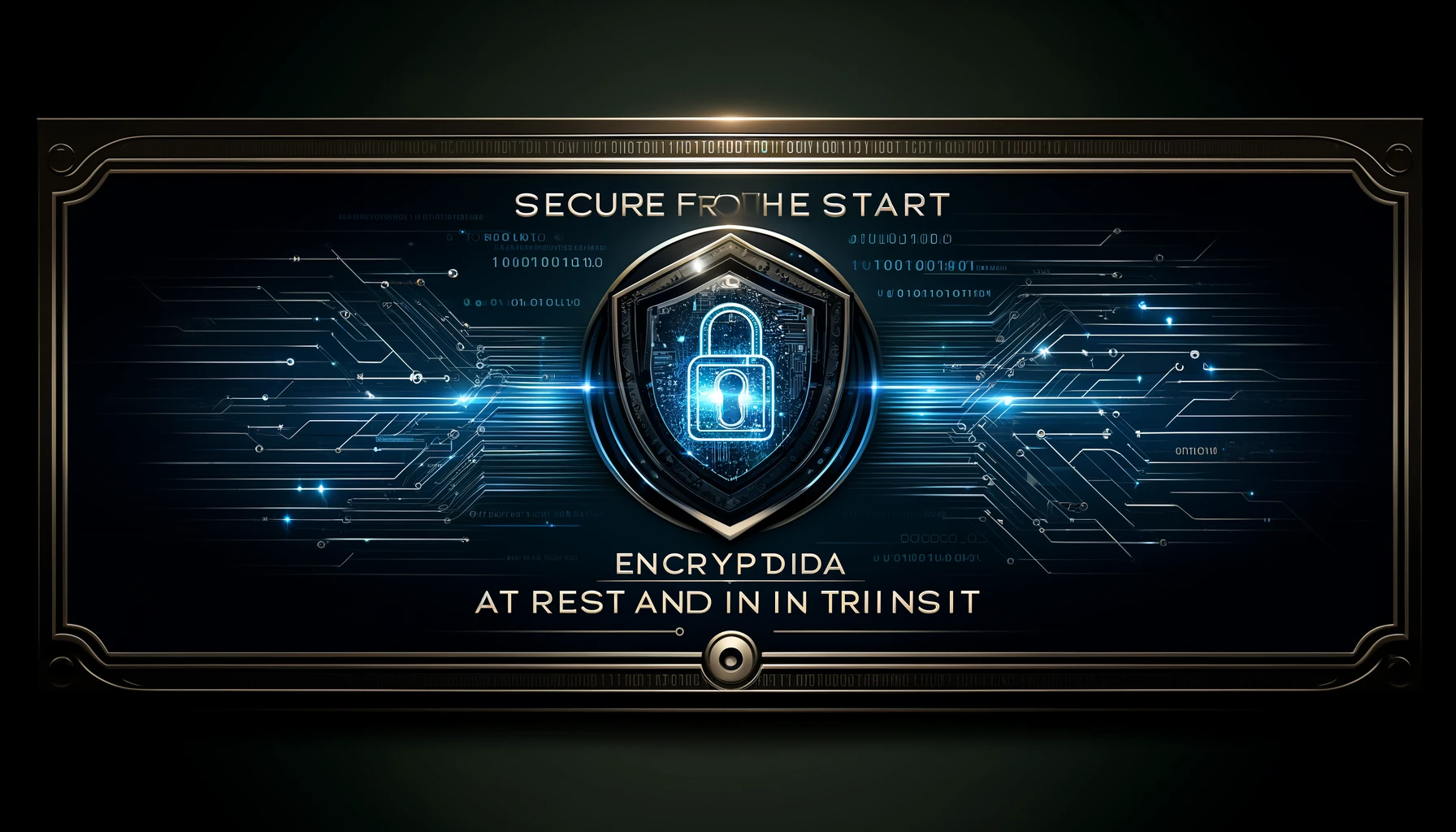Security is a cornerstone of GDPR compliance, and at Transcribe Monkey, we take it seriously. Protecting user data isn’t just a regulatory requirement—it’s a fundamental part of building trust with our users. From the very beginning, we made security a priority, implementing robust encryption techniques to safeguard data both at rest and in transit. In this post, we’ll explore the encryption strategies we use, the rationale behind our choices, and how these measures contribute to a secure and compliant system.
The Importance of Encryption in GDPR Compliance
The General Data Protection Regulation (GDPR) mandates that organizations take appropriate technical and organizational measures to protect personal data. Encryption is explicitly mentioned as a recommended method for securing data, both to prevent unauthorized access and to mitigate the impact of data breaches. By encrypting data, we ensure that even if it falls into the wrong hands, it remains unreadable and useless without the proper decryption keys.
Encrypting Data at Rest
Data at rest refers to information stored on physical or cloud-based storage systems—such as databases, file systems, or backups. At Transcribe Monkey, we use strong encryption protocols to ensure that all stored data is protected.
Choosing the Right Encryption Algorithms
We selected Advanced Encryption Standard (AES) with a 256-bit key (AES-256) as our primary algorithm for encrypting data at rest. AES-256 is widely recognized for its strength and efficiency, making it the industry standard for securing sensitive information.
Implementing Encryption at Rest
Our encryption process involves the following steps:
- Database Encryption: We use Transparent Data Encryption (TDE) for our relational databases, ensuring that all stored data is automatically encrypted without impacting application performance.
- File Storage Encryption: For files and documents, we employ server-side encryption provided by our cloud storage provider, ensuring that data is encrypted before it is written to disk.
- Backup Encryption: All backups are encrypted using the same AES-256 standard, ensuring that historical data remains secure.
Key Management for Data at Rest
Effective encryption relies on secure key management. We use a centralized Key Management System (KMS) to generate, store, and manage encryption keys. The KMS allows us to:
- Rotate keys regularly to minimize the risk of key compromise.
- Enforce strict access controls, ensuring that only authorized personnel can access encryption keys.
- Audit key usage to detect and respond to any suspicious activity.
Encrypting Data in Transit
Data in transit refers to information being transmitted across networks, whether between user devices and our servers or between internal systems. To protect data in transit, we use strong encryption protocols that prevent eavesdropping and tampering.
Using TLS for Secure Communications
Transport Layer Security (TLS) is the backbone of our data-in-transit encryption strategy. We use the latest version of TLS (currently TLS 1.3) to encrypt all communications between our servers and client devices. This ensures that data transmitted over the internet is protected from interception and modification.
Implementing End-to-End Encryption
In addition to TLS, we implement end-to-end encryption (E2EE) for particularly sensitive data. E2EE ensures that data is encrypted on the sender’s device and only decrypted on the recipient’s device, providing an additional layer of security.
Protecting Internal Data Transfers
Data transfers between our internal systems are also encrypted using TLS. We configure our internal APIs and microservices to require secure connections, ensuring that data remains protected even within our trusted network environment.
Managing Encryption Keys Securely
Key management is critical to maintaining the integrity of our encryption efforts. Our KMS provides a secure and efficient way to handle encryption keys for both data at rest and in transit.
Key Generation and Storage
- Key Generation: We use hardware security modules (HSMs) to generate cryptographic keys. HSMs provide a high level of security by generating keys in a tamper-resistant environment.
- Key Storage: Keys are stored securely within the KMS, with access restricted to authorized personnel and applications.
Key Rotation and Expiry
- Regular Rotation: Encryption keys are rotated on a regular schedule to reduce the risk of key compromise.
- Automatic Expiry: Keys have predefined lifespans, after which they are automatically retired and replaced.
Monitoring and Auditing Key Usage
- Access Logs: We maintain detailed logs of all key access and usage, allowing us to detect any unauthorized activity.
- Regular Audits: Periodic audits are conducted to ensure compliance with key management policies and to identify any potential vulnerabilities.
Responding to Data Breaches
Even with strong encryption in place, it’s essential to have a plan for responding to potential data breaches. Our incident response plan includes the following steps:
- Detection and Analysis: Continuous monitoring helps us detect anomalies that may indicate a breach.
- Containment and Mitigation: If a breach is detected, we take immediate action to contain the incident and mitigate its impact.
- Notification: In accordance with GDPR requirements, we notify affected users and relevant authorities promptly if personal data is compromised.
- Post-Incident Review: After resolving the incident, we conduct a thorough review to identify the root cause and implement measures to prevent future occurrences.
Building User Trust Through Transparency
At Transcribe Monkey, we believe that transparency is key to building user trust. We are committed to providing clear and accessible information about how we protect user data, including our encryption practices.
Communicating Security Measures
- Privacy Policy: Our privacy policy outlines the steps we take to secure user data, including encryption methods and key management practices.
- User Education: We provide resources and support to help users understand how their data is protected and what they can do to enhance their own security.
Continuous Improvement
Security is an ongoing process, and we are dedicated to continuously improving our encryption practices. We stay informed about the latest developments in cryptography and data protection, and we regularly update our systems to address new threats and vulnerabilities.
Conclusion
Encryption is a fundamental component of GDPR compliance and a critical part of our commitment to protecting user data at Transcribe Monkey. By implementing strong encryption techniques for data at rest and in transit, and by managing encryption keys securely, we ensure that our users’ information remains safe and secure. Through transparency and continuous improvement, we build trust with our users and demonstrate our dedication to data privacy and security.
Stay tuned for more insights into how Transcribe Monkey prioritizes privacy and security in every aspect of our development process. If you have any questions or want to learn more about our encryption practices, feel free to reach out—we’re always here to help!

